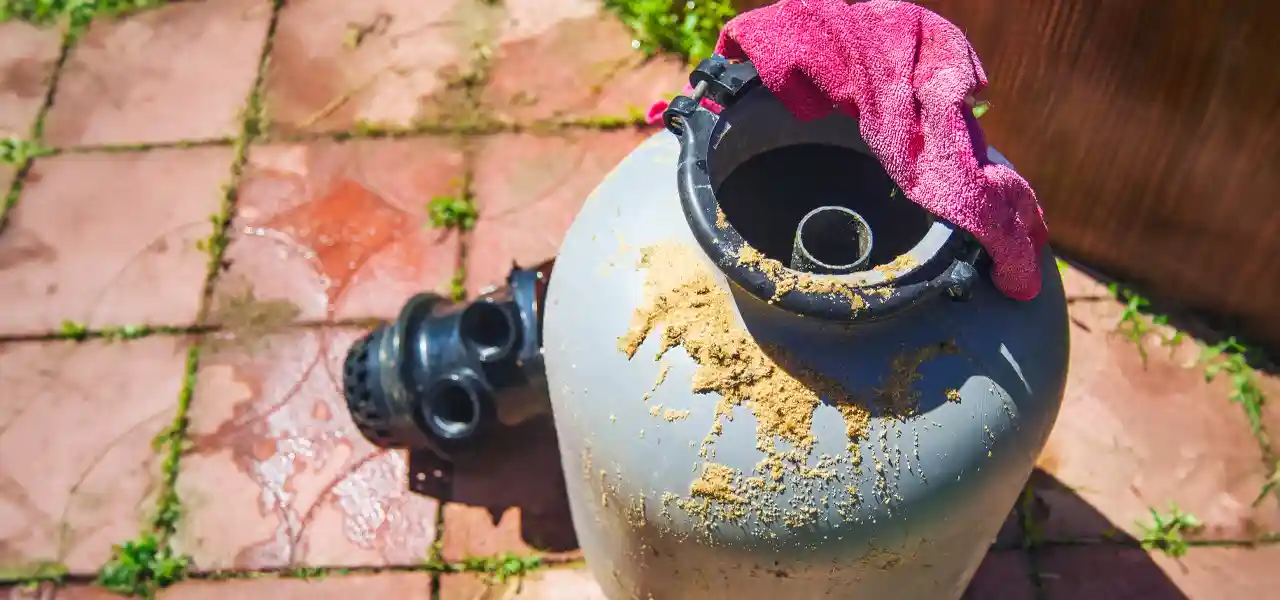FREE Standard Shipping On All Orders $100 or More!*

Pool Filter Sand 101
Sand filters are the most common type of pool filter in America, and for good reason! They are efficient, powerful, and relatively easy to maintain. However, changing the media inside sand filters can be somewhat challenging and time consuming. In this article, we discuss when, why, and how to change pool filter sand, so you can keep your sand filter in top shape!
Why Change Pool Filter Sand?
- New sand has sharp, crisp edges that stack well into layers. Old sand has rounded edges that don't filter the water as well.
- Oily dirt, dead algae, and other gummy residues build up and are pushed deeper into the sand bed with each backwashing.
- Small amounts of sand can be lost during backwashing, and over many years time, can add up to a considerable loss.
When to Change Filter Sand
This depends on the size of your filter in relation to the pool, but somewhere between 2-7 years. Above ground sand filters of 16", 18", or 21" in diameter often need fresh sand more often, every 2-5 years. Sometimes smaller sand filters need new sand sooner if the pool is used heavily, has sticky tree debris, or has a pump that is too large for the filter size.
Larger inground sand filters with 24" to 36" diameter tanks can often go longer between sand changes, simply because of the larger filter area. 5-7 years is the normal interval for larger sand filters.
The best time to replace sand is before you need to, meaning before the sand gets worn out and stops filtering as effectively. If you notice poor water quality, short filter cycles (time between backwashes), or dirt passing through the filter, it may be time to replace the pool filter sand.
What Type of Sand Do You Need?
Masonry sand or play sand won't work in a filter, use only a high quality pool filter sand. Pool filter sand, is specifically graded silicone quartz, .45-.55 mm in size, otherwise known commercially as #20 silica sand. You will find it to be clearly labeled pool filter sand.
Our help files also have a few entries of folks who purchased a cheap product ($5) labeled filter sand, that turned out to be a very poor substitute. Buying a well known brand of pool filter sand from a pool retailer you trust may make a difference in the quality and cleanliness of the filter sand you buy.
How Much Sand Do You Need?
Sand filters are not filled completely full of sand, but only about 2/3 full, to allow "Freeboard" space in the tank, above the sand bed. Your manufacturer will list the amount of sand required on their website, usually on the brochure or spec sheet, or you can find it with a quick google search with your filter make/model.
You need to know the tank diameter, which is often reflected in the filter model number, or can be found on the manufacturer spec sheet. Or you can measure the tank with a ruler.
How to Change Pool Filter Sand
How to actually change the filter sand - that's a whole other topic that we talk about here.
You may also be interested in this article about how to improve sand filtration, or information about pool filter sand alternatives like ZeoSand or FilterGlass.